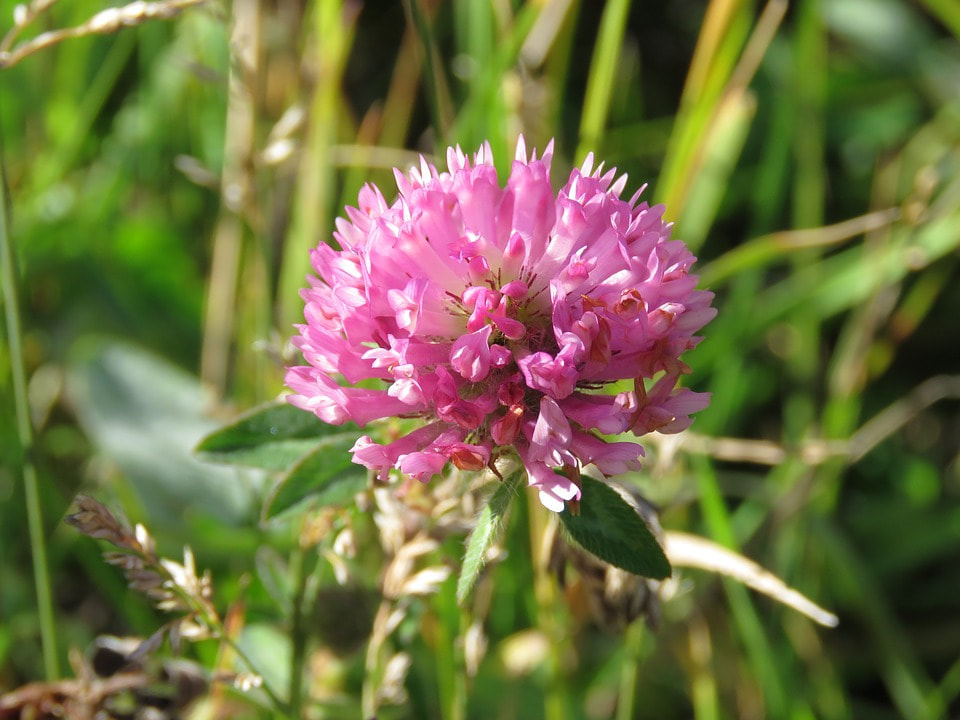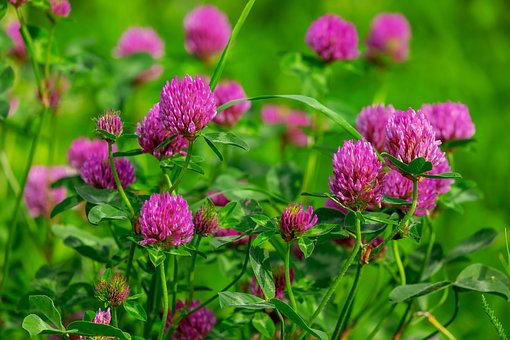Qualities of CloverCommon Name: Red Clover /White Clover Latin : Trifolium pratense / Trifolium repens Family: Fabaceae
History and/or use:. Excellent for throat irritations/coughs and good green compost as fixes nitrogen. Wildlife Value: Main flow pollen producer for invertebrates Clover is a wonderful feature of our meadows and indeed many grass areas both in the countryside and in urban areas. It is one of the first plants to produce the ‘main flow’ nectar for bees and other invertebrates after the Dandelion and Sycamore have finished flowering. Its delicate scent attracts long-tongued flies, butterflies, moths and as already mentioned bees. Once the flowers have been fertilised they fold down over their young pods and the flower untouched, still standing, is referred to as an old maid. Both the leaves and flowers of this plant can be eaten unless it is high in prussic acid which makes it bitter and unsuitable for consumption. It can also be used as a green compost for vegetable growers as it is able to fix nitrogen and therefore enrich the soil. Organic farmers ( and indeed other growers) simply dig or rotovate the plant back into the soil. It is also good animal fodder. If you have any medical conditions please check with a medical herbalist first before taking any plant and only harvest it if you are 100% sure what it is! As a herb Clover flowers are traditionally used as a syrup for coughs especially whopping cough and help to purify the blood. To help relieve bronchial or irritating coughs a brew of flowers can be made by steeping them in hot water for about 8 minutes and it tastes great! It is also been said to be good for liver ailments and smoked in a pipe for toothache. Today we tend to use the red clover for medicinal cures although other species can also be used. Clover is steeped in folklore, a candidate for the Irish Shamrock or Seamrog. This mythical plant brings great fortune to all who use it. The Shamrock is thought to be the white clover or more than likely the lesser trefoil (Trifolium dubium). It seems to be the quantity of leaves borne on clover which dictates its magical use. If you would like to support our work and go even more deeply into Nature Connection please become a member and have exclusive access to our online course.
1 Comment
6/10/2019 01:28:29 am
Clover might be small compared to other loud flowers, but it's a sure thing that it has its own beauty and uniqueness to offer. Organic farmers should invest on unique flowers because most of the flowers I see on the market are the mainstream ones. It's about time for clover and the like to be appreciated even more by the public. If that's going to happen, the demand would go higher and the organic farmers will surely get the chance to earn from it. That sounds great isn't it?
Reply
Leave a Reply. |
Details
Poetry of flowersJoin me to explore the flora of the British Isles on this blog. My intention is to attempt to capture the unique quality and beauty of each species of flower, tree or shrub. For every species featured I will be growing many more wildflowers to celebrate the joy of their existence, their intrinsic conservation value and bewildering array of uses. For nearly 30 years I have noted, studied and explored wildflowers in the field much to the patience of the walker beside me. To share this passion is a heartfelt plea to respect, preserve and care for all British Wildflowers no matter how common they seem. Archives
February 2024
Categories |



 RSS Feed
RSS Feed
